When you think about it, the only thing we really know for sure about skunks is that they stink!
We’ve all grown up with the stories about skunks ending up in someone’s house or a person accidentally running into one in the woods, and getting a huge spray to the face!
When you’re in the car and all the sudden you smell this awful smell for a stretch of the road, you know you just passed a place where a skunk left its mark.
We know they’re little furry beasts with black fur, a white stripe down its back, and the ability to shoot the worst smelling odor in the universe into the air when they feel threatened.
But do we even know where they live? How old do they live to be? Even what they eat? Are they carnivores or herbivores or a mix of both?
Well, I’ve gone in-depth for the first time and really figured out what a skunk is deep inside. Read on to learn facts about skunks you’ve never heard before!
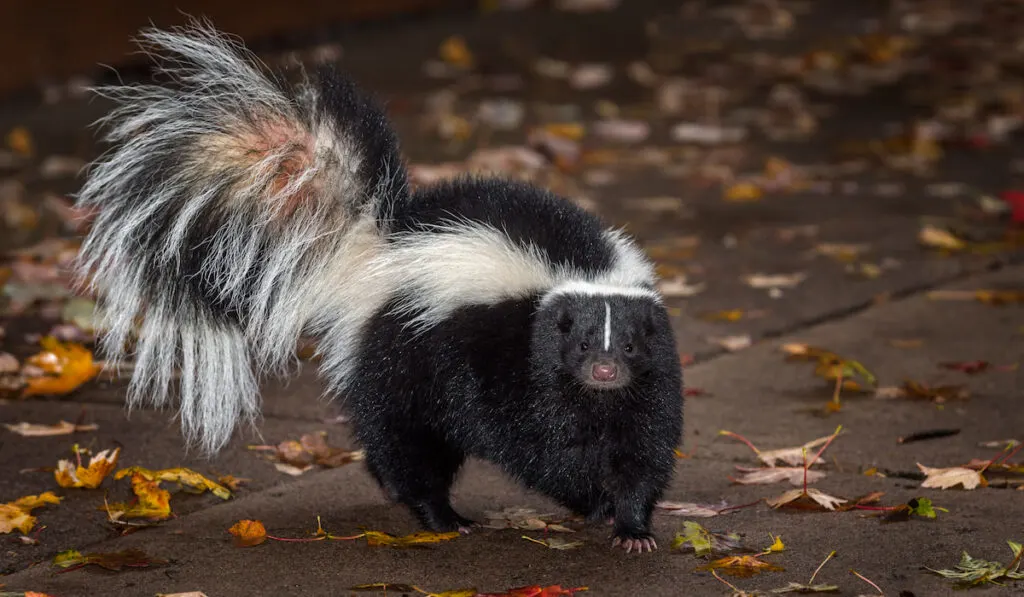
Table of Contents
What Do Skunks Eat?
Skunks are omnivores, meaning they’ll eat both plant-based foods and meat. Obviously, they won’t eat humans, so the only real threat they pose is making you or your house smell like a stink bomb went off for quite some time, or they may try to eat your chickens if you’re a farmer.
Skunks share a raccoon’s scavenging nature during colder months or when food is hard to find. And when they live near humans, they can be spotted poking through your garbage.
In the wild, they’ll resort to eating more vegetables and fruit because it will be too cold and both they and their prey will be hiding indoors. They’ll eat nuts and roots of trees and plants, leaves and grasses, and cherries, berries, grapes, and corn if they can find any.
Skunks are nocturnal, so they hunt at night. Typically, when going after other creatures they aim for insects and rodents, but they’ll eat other small animals they can find.
Specifically, with the bugs, skunks enjoy spiders, crickets, grasshoppers, and beetles. Skunks will even eat bees, and they adore finding a beehive and its honey and being able to eat both! With their thick hides, bee stings don’t harm a skunk, so that’s no threat to them.
Skunks can even be known to eat amphibians, such as newts, toads, and frogs.
As far as meat goes, skunks will eat fish and birds, specifically birds that are nesting on the ground as they are the easiest to catch (hence, watch your chicken coops!). They will also eat small mammals and rodents such as mice and even rabbits.
Skunks will eat rabbits, so if you’re thinking of getting a skunk as a pet and you have a rabbit also, you may want to think again.
If you’ve got a farm and a rabbit enclosure and you suspect a skunk to be living nearby you’ll want to protect your rabbits just as much as your chickens.
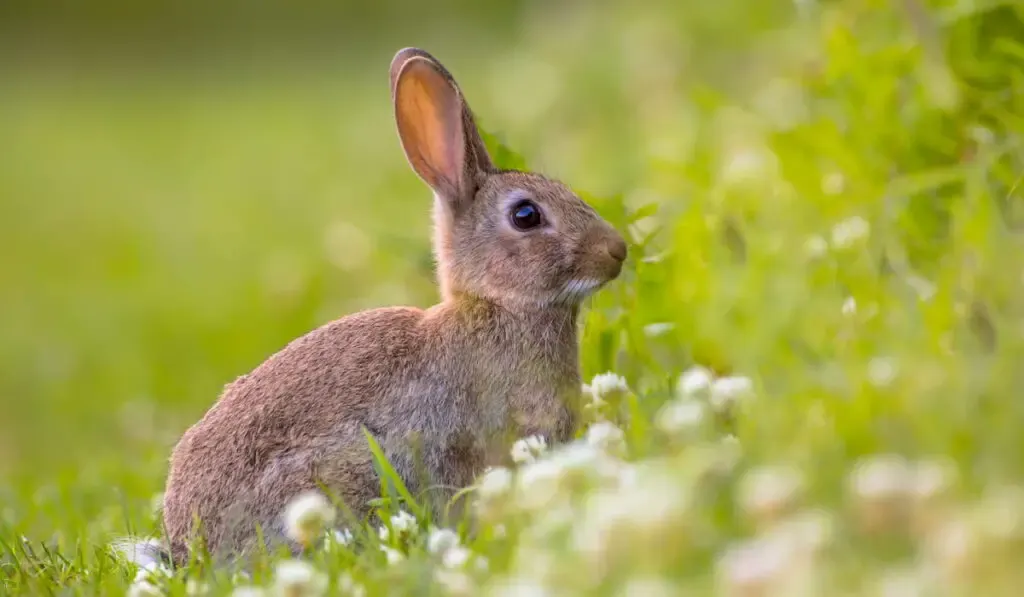
What Are Skunks? Where Do They Naturally Reside?
Skunks, also known as “polecats,” are small mammals that use their scent glands in order to release a horribly vile odor when they feel threatened. And it is probably one of the most effective self-defense tactics because no one can handle that smell!
Skunks are typically no bigger than a domesticated cat, and some much smaller. The most commonly known species of skunk is the striped skunk, but there are actually eleven species of skunk around the world!
Skunks don’t just reside in forested areas. Skunks can be found in natural habitats such as forests, mountains, and deserts.
These mammals are most commonly found in our Western Hemisphere of the earth. Our well-known striped skunk populates most of North America, from down in Mexico all the way through the states and up to Canada.
Skunks usually reside in burrows close to a water source. They’ll make their little dens in hollow logs, trees, dirt burrows, or even under porches in urban places (or the countryside, if your farm animals make easy pickings), so watch out!
These mammals are pretty solitary creatures. They don’t mate for life and are could be seen as disloyal in our human terms.
A male and female will get together during mating season (which is winter, like bears), and have kits. Then the female will promptly kick the male out of the den, raise her kits as a single mother, and send them off to live their own lives.
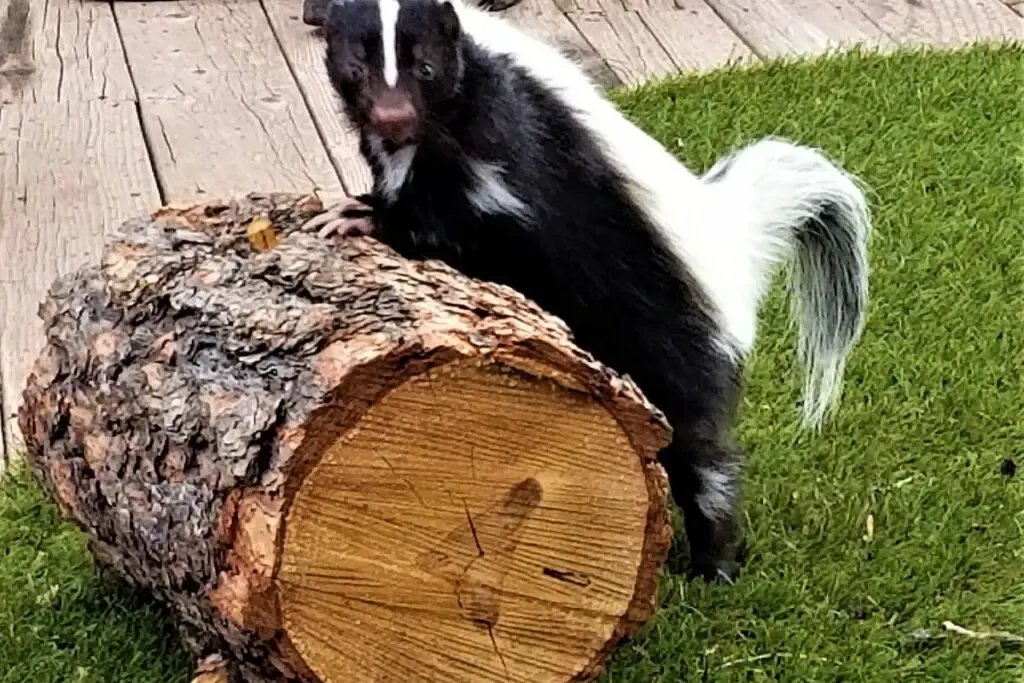
There Are Eleven Different Species? What Are They?
Striped skunks are black, and actually have a white V-shape going down their back instead of an actual stripe. But I guess they couldn’t just call them V skunks, that would be weird. “Striped” skunks also have a strip of white fur between their eyes.
There is a similar-looking skunk found mostly in the American Southwest called the hooded skunk. It has the same white strip between its eyes, but its stripe is on steroids, very thick, and covers most of the top half of its body in white.
It’s called a “hooded” skunk because the hairs at its neck are quite long, appearing to have a hood pulled back at its neck.
Next on the list of species is the spotted skunk. Yes, skunks can be spotted!
These skunks are still black and white, but they have a strange white pattern on their back that looks like the swirls in ripples going across their body. This particular breed can be found in America, Southern Canada, and all the way down to Costa Rica.
Spotted skunks are typically very small, approximately the same size as a gray squirrel, but can be so small as to fit in the palm of your hand (those are the pygmy skunks).
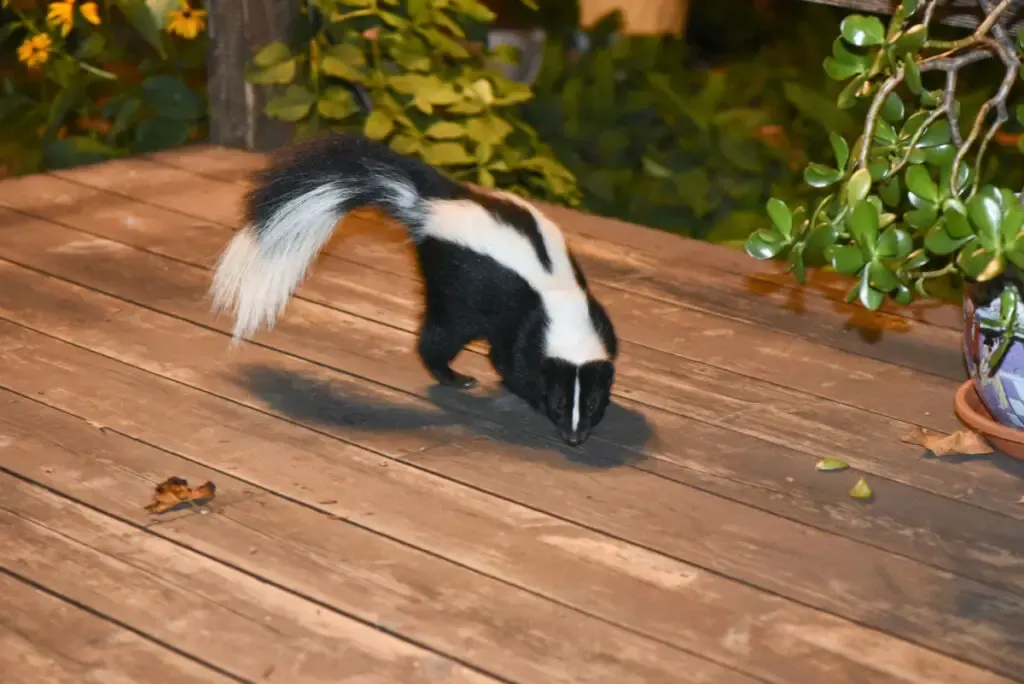
Hog-nosed skunks are probably the funniest looking ones, poor things. They are called “hog-nosed” for a reason: they have little tiny pink pig noses at the end of their snout, which is cute but also unfortunate.
These skunks also don’t stay strictly black and white. They have a black body for the most part and a white V down their backs, but in between the lines of the V, they adopt a light or reddish-brown color (in between the lines of the V being the top of their back).
They are found in both North and South America, the North American ones being larger than the South American skunks. These skunks also have no strip of white between the eyes, it would distract from the nose and that has to be the main feature!
The last broad species (because each has slightly different skunks within them depending on geography) of skunks is the least alike to the others, with the most unfortunate name: “stink badgers.” Someone was really creative calling that one.
These skunks are much less widespread, only to be found in Indonesia, the Philippines, and Malaysia.
In Indonesia and the Philippines, these stink badgers look similar to the hog-nosed skunk, with the pig nose and snout, and their markings are different. Stink badgers have either black or brown bodies, but a little tuft of white fur at the top of their heads and tails like they got their hair dyed platinum blonde.
They can occasionally have a thin white stripe connecting the hair on their heads to their tails, but for the most part, it’s separate.
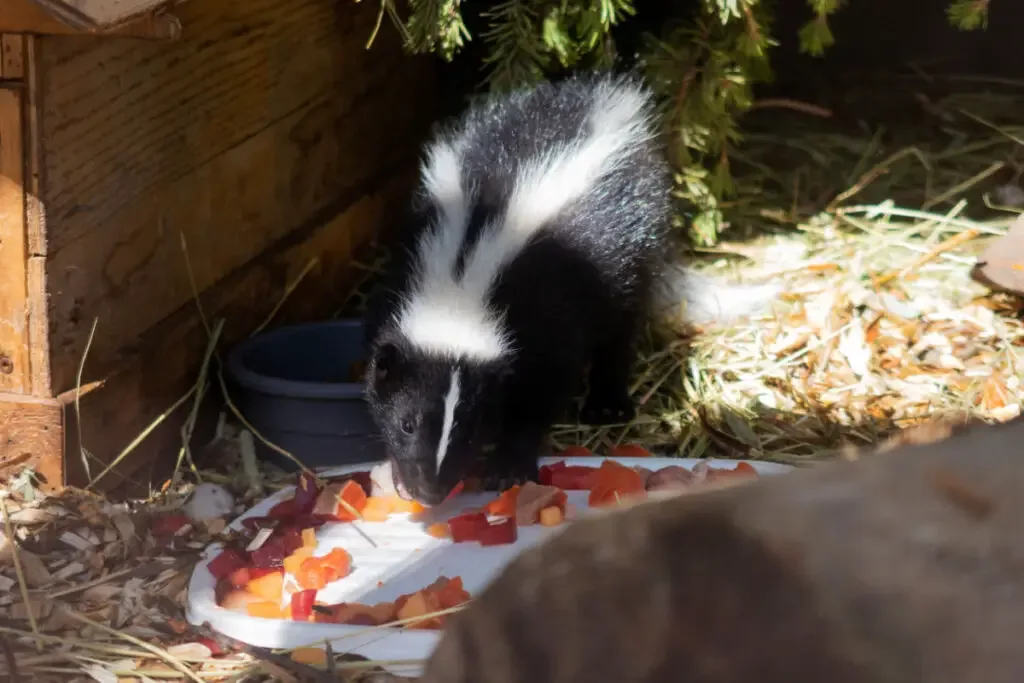
What Should We Not Feed Skunks?
Have a pet skunk? Or found one under your porch and want to treat it like a pet? Wondering what to feed it?
Skunks need a balanced diet, just like you. They need a nice harmony between vegetables and proteins, and fruits are welcomed in that balance, too. If you feed your pet skunk too many vegetables, they’ll lose bone marrow, so avoid that.
Specific vegetables such as onions and asparagus cause them to have seizures and get sick, so avoid those! Don’t feed your skunk the same food you give your pet cat or dog, because the fat content is too high. And of course, don’t feed your skunk processed human foods such as lunch meat, chips, candy, or chocolate.
So, skunks are quite interesting creatures. I bet you didn’t know half of that before reading! There are so many more species than we thought, each with unique looks. They live all up and down and around the Western Hemisphere. They eat all types of foods, from berries to vegetables to rabbits!
A world of information to uncover about these stinky little mammals, and this was only the beginning.
